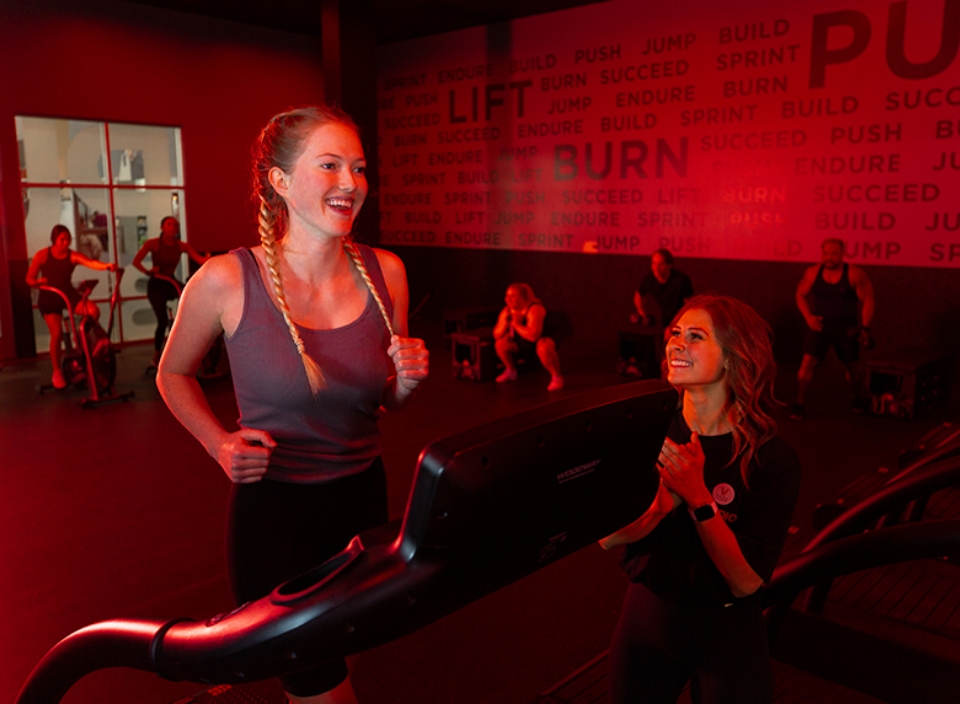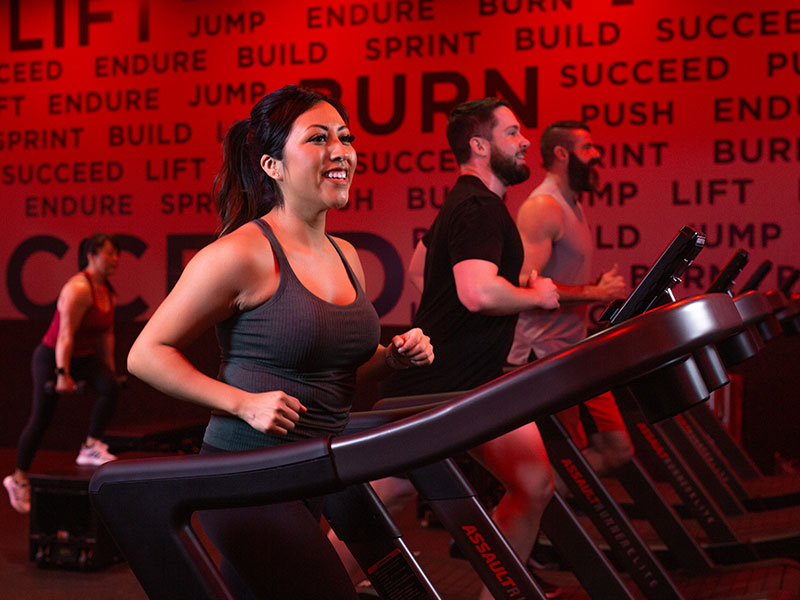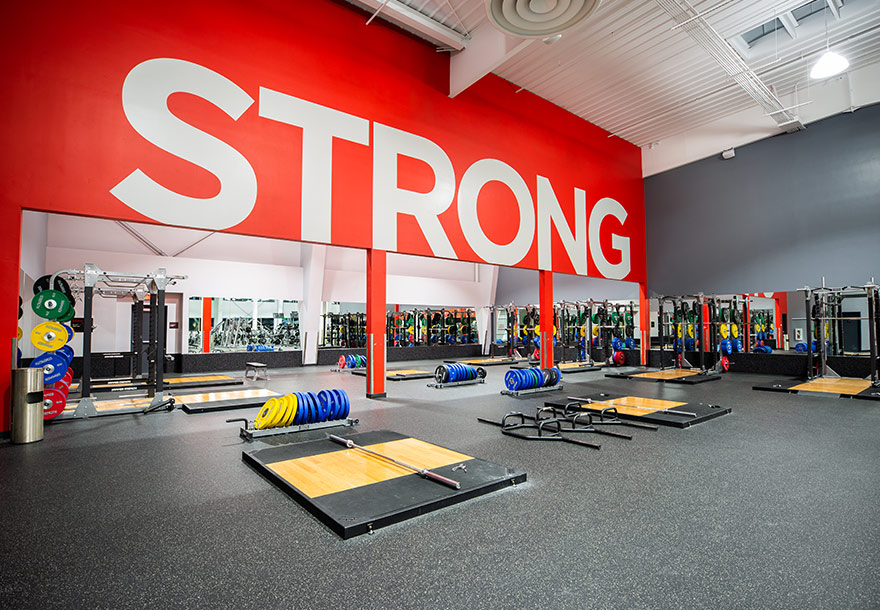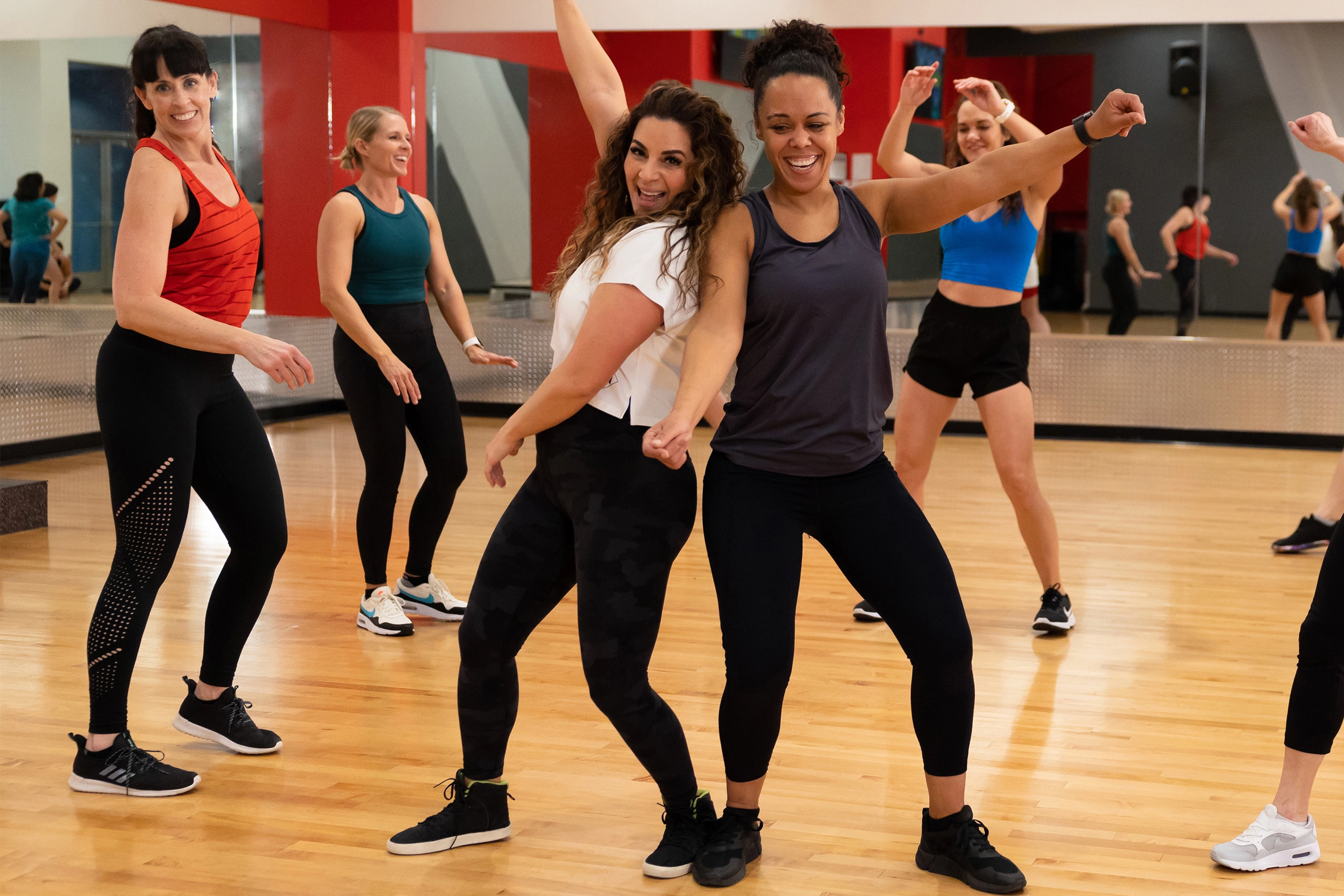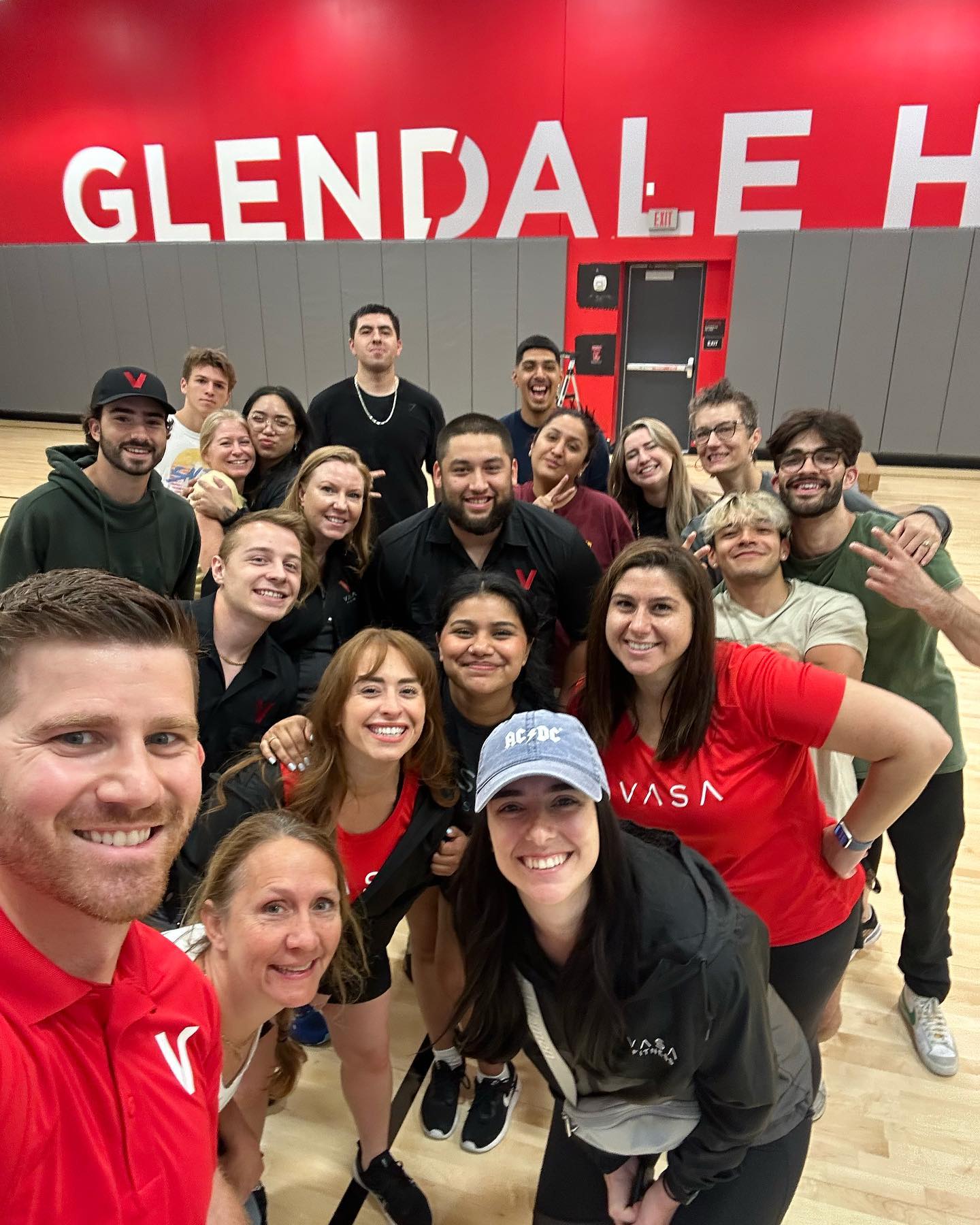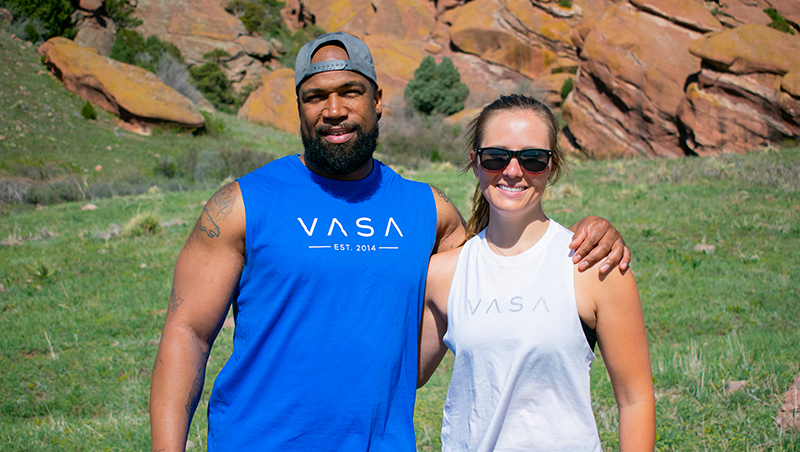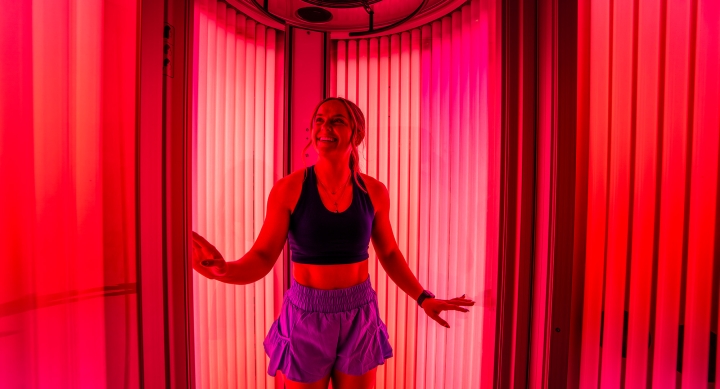Improve Your Basketball Hops
With March Madness® right around the corner, VASA’s basketball courts fill up with members inspired by the tournament and wanting to play pick-up games. Basketball is a game of stop-and-go action including running, jumping, and sliding. If you’re looking to improve your ability to soar over defenders and improve your jump shots, following these exercises will help you increase explosiveness and strengthen the lower body to get a competitive edge.
Plyometrics
Plyometrics are commonly known to improve jumping. This type of training takes advantage of the stretch-shorten cycle muscles go through when you bend the knees and hips, which stretches the muscle, and then quickly shortening it when you jump up. This load-explode cycle makes the muscles springier and allows a high rate of force to develop, which gets your body off the ground when you jump.
Overloaded Eccentrics
Overloaded eccentrics, or fast deceleration, is generally the first step to developing lower body power. Landing from higher heights challenges the muscles by adding more force than a typical jump and land. Being able to absorb force will eventually allow you to absorb the landing and use it to jump even higher without your feet spending a ton of time on the floor. Most players jump off one leg, rather than two, because they’re running towards the basketball hoop. Overloaded eccentrics help build stability and power around the ankle, knee, and hip so when you take off for a layup or a dunk, you can glide through the air versus fighting gravity.
Squats
Strength is required to complete all these exercises safely and effectively. Jumping requires a short squat, so training a fully loaded squat where the thighs get parallel to the ground will help keep the movement powerful.
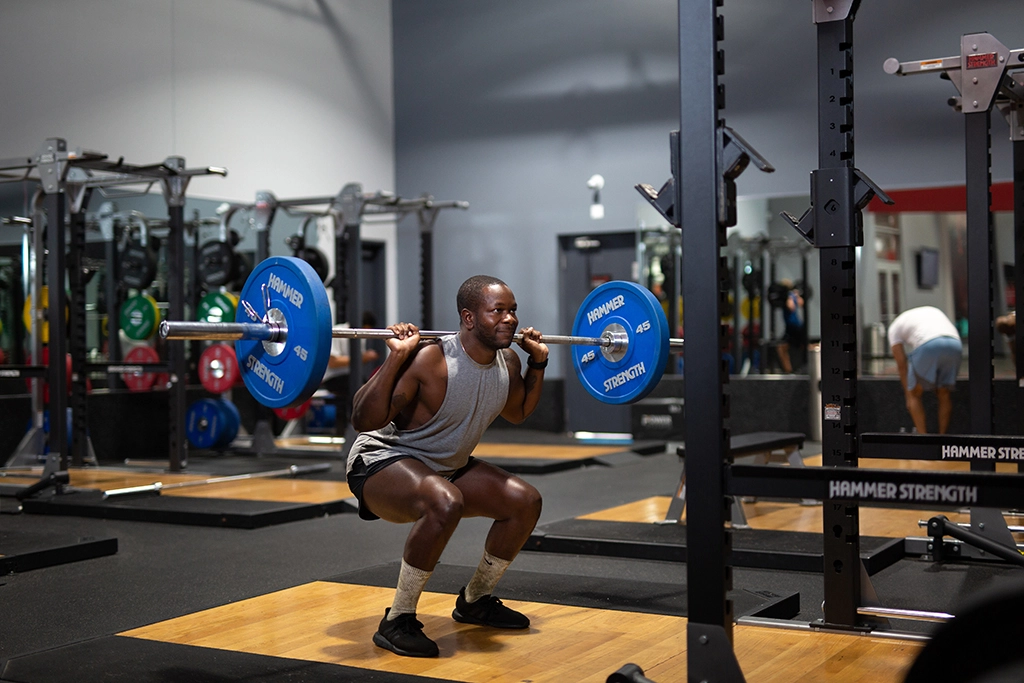
French Contrast Method (FCM)
You’ll put all these movements together in what’s known as the French Contrast Method (FCM)—a super set that will help you improve your jumping ability. FCM uses (1) a loaded strength-based movement, (2) followed by a bodyweight plyometric, (3) then a lightly loaded plyometric, (4) and finishes with an accelerated plyometric movement. This set mimics the demands of basketball more than any other off-court training protocol. Rest for 20-30 seconds between the exercises and two to four minutes between sets, completing no more than three sets.
Double Leg Jumps
- Dumbbell Goblet Squats: 3 reps with heavy weights
- Bodyweight Squats: 3 reps performed quickly
- Box jump: 1 max height jump
- Band-Assisted Vertical Jump from the Ground: 3 reps performed quickly
Single Leg Jumps
- Dumbbell Single Leg Goblet Squat: 3 reps/leg with heavy weights
- Bodyweight TRX Pistol Squat: 3 reps/leg performed quickly
- Single Leg Box Jump: 1 max height jump
- Kettlebell Single Leg Hand Supported Swing: 3 reps/leg, rising onto the toe for each rep
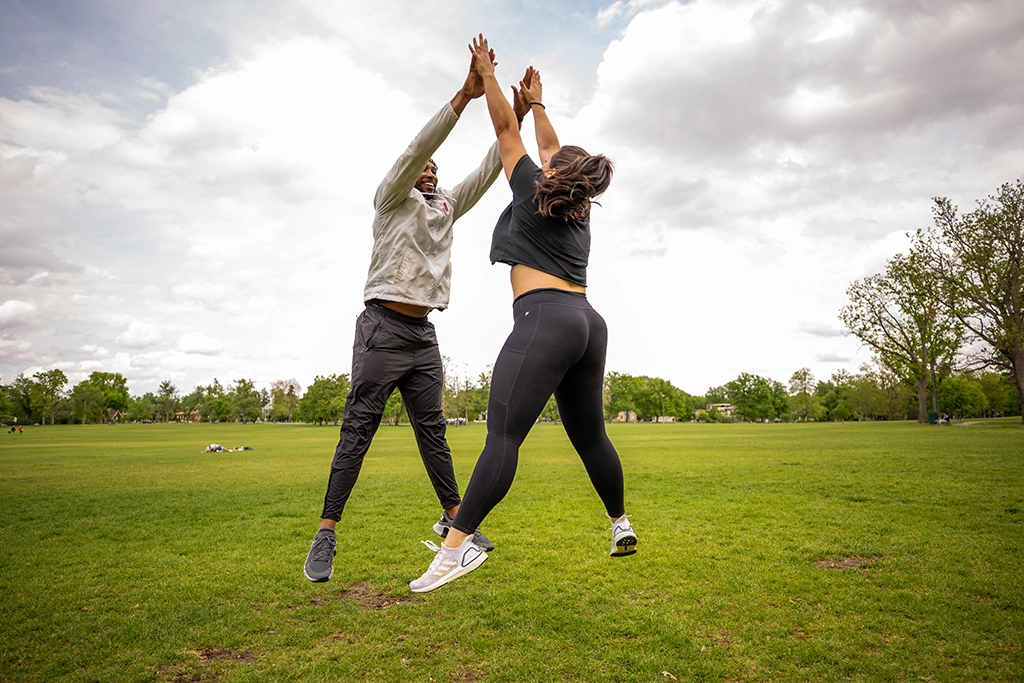
Incorporating more power-based training into your weekly workout routine will help you add height to your jump shot. Training both double and single leg movements ensures you can jump off the floor in many different ways. If you’re looking to add more bounce to your game, take advantage of the routine above or reach out to one of the certified Personal Trainers at VASA Fitness to evaluate your fitness and create a personalized plan to add those extra inches to your vertical jump.
RECOMMENDED
SUBSCRIBE TO OUR BLOG
Enter your email to start receiving our blog emails!
